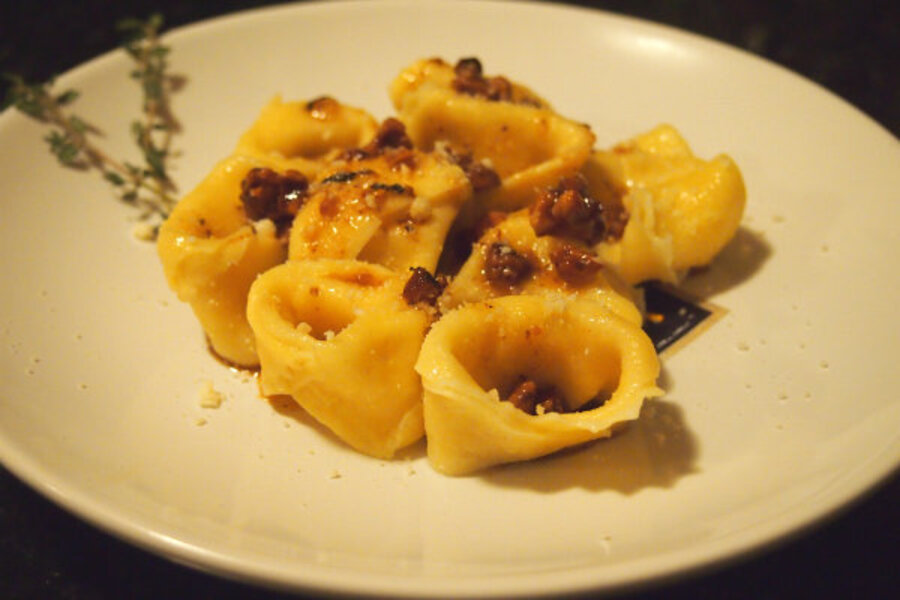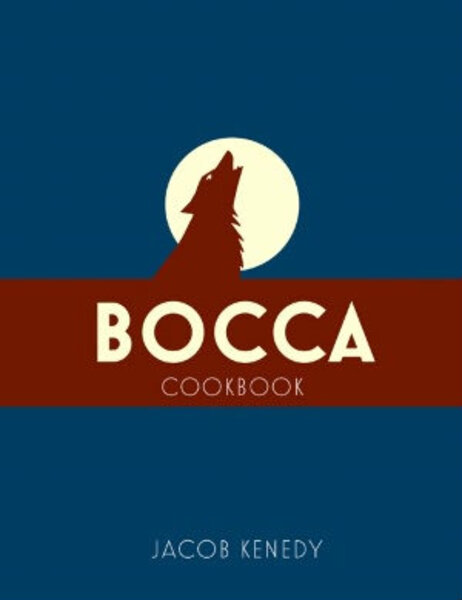Cookbook review: Bocca by Jacob Kenedy
Loading...
The value of a good cookbook can be recognized in a couple of ways. First, there is the immediate temptation to sit down and read it cover-to-cover like a good novel. Second, is the number of pages you dog-ear before you even shop for ingredients. Planning for the review of Jacob Kenedy’s Bocca cookbook (Bloomsbury, 2011, $45), I started to thumb through the book, realizing only after 20 minutes of absorbed page turning that I had marked nearly two-dozen recipes to test.
Unfortunately, I had to winnow down the list to a reasonable number to share with friends who would be joining us to cook together, lending us their kitchen in Boston’s North End neighborhood. I have a perfectly good kitchen of my own, but diving into Kenedy’s rich Italian cuisine seemed much more appropriate in the city’s best-known Italian neighborhood.
We selected the Ricotta Tortelloni with Burnt Walnut Pesto, a dish that Kenedy – the noted chef of the acclaimed London restaurant Bocca – identifies with the Puglia region of Italy. The book divides recipes into 12 different chapters, ranging from 32 pages devoted to raw dishes (vegetables, meats, seafood), all the way to nearly two-dozen pages devoted to drinks and the rules of the card game Posso. Each recipe includes the region where the dish hails from, as Kenedy addresses the broad selection of Italian food varieties that make it hard to “pin down” exactly what defines Italian cuisine.
Most of the recipes boast few ingredients – Kenedy considers Italian food to be “intrinsically simple” – all of which are relatively easy to find. The focus of each recipe is on the flavor combinations and not a litany of instructions. However, fewer instructions does not mean less time in the kitchen, but rather the ability to take your time to do it right. With a team of three amateur cooks and one photographer, we managed to produce the tortelloni and pesto from scratch in a little over two hours. And the final product was entirely worth it.
Kenedy also doesn't hold your hand while you prepare the recipe, but instead offers descriptions of the intended result of the steps. For instance, describing the fried walnuts for the pesto as taking on a color similar to “very tan Mediterranean skin” led to some debate among the group. For some, a lack of guidance can be daunting, but in the in the case of our test dish, I found it freeing. Kenedy leaves you with room for interpretation and a sense of preparing a dish the same way as a native Italian might, using the guidance of past generations and less of a recipe to shape the final result.
"Bocca" is beautifully illustrated with images of the regions featured through the recipes. You aren’t looking at final dishes in a kitchen; instead you are placed in the middle of a local market in the center of a piazza or at the edge of the waterfront as the daily catch arrives at the dock. It's a beautiful food narrative.
Kenedy's cookbook is seafood and fish heavy and dives into the art of charcuterie as well for those with the patience and means to preserve their own meats. As for pasta dishes most often associated with Italian cuisine, there are in fact relatively few within the 464 pages of the book.
The book is not an everyday cookbook for fans of American-style Italian cuisine. It a celebration, perfect for those who want to embrace and cherish the flavors of Italy, who see the preparation of food as well as its enjoyment as inseparable. There are little to no quick recipes, there are no diet ingredients, just rich flavor and substance.









